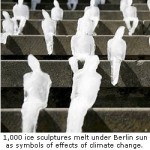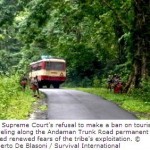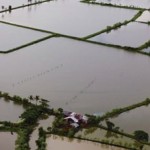“We aim to run a farm that is solely operated on eco-friendly, alternative energy sources leaving a carbon free footprint. We currently operate the largest geothermal greenhouse heating project in the world combing geothermal heating and carbon dioxide. Geothermal energy has made a greener business, reduced the need to farm more extensively and allow us to release land back to conservation,” says Hamish Ker, Oserian Production Director.
Where once were wheat fields and flower farms, now wildlife roams on a 20,000 acre conservancy and migrates from Naivasha to Oserian and on to Hell’s Gate National Park through a 3,000 acre game corridor. In 15 years, the land has reverted to being bush and savannah. White rhino, giraffe, zebra, buffalo, leopard and a solitary male lion from the Nakuru region are just some of the species now integrated back into the landscape. Geothermal energy, aside from supplying power is successfully driving business and conservation, with one feeding and supporting the other.
From micro to macro
Based on its extensive expertise in geothermal power, KenGen has already assisted neighbouring countries, including Rwanda, Eritrea and Zambia in the assessment and development of their geothermal resources.
In addition and owing to the successful completion of the JGI project, UNEP in collaboration with the World Bank has initiated a regional project in six east African countries, Djibouti, Eritrea, Ethiopia, Kenya, Tanzania and Uganda to tap into the Rift Valley’s vast, unexplored geothermal potential.
The African Rift Geothermal project (ARGeo Project) is funded by a GEF contribution of US$ 17.75 Million. This programme now intends to provide a platform for accelerated geothermal development and stimulate geothermal investments in the region.
Initial estimates indicate that these investments could lead to 891,458 tons of CO2 emission savings per year and up to 17.8 million tons over 20 years. Given the demonstration and “snow-ball” effect of the ARGeo project, it’s expected that these pilot projects will generate yet more interest in geothermal technologies in other countries of the Rift Valley (Sudan, Rwanda, Burundi, the Democratic Republic of Congo, Malawi, Mozambique, and Madagascar and Yemen, on the Arabian side of the Rift).
This kind of innovation is not only a boon for Africa, but also attracts foreign expertise and investment. During the exploratory drilling, KenGen used local equipment but now uses the Great Wall of China Drilling Company for deeper and more efficient wells – another demonstration of South South Cooperation.
Where could it lead to?
Governments are meeting in November in Cancun, Mexico for the next round of UN climate negotiations. Current commitments and pledges under the Copenhagen Accord covering emissions up to 2020 provide a good platform for global action, but the level of current ambition is widely viewed as insufficient to meet a 2 degree warming limit.
Geothermal expansion is just one of the many ways in which we can meet the climate change. Clean energy is about powering the future, providing jobs, industry and opportunities. The challenge is now is to accelerate and scale-up these world-wide transitions.
The Cradle of Civilisation, the Great Rift Valley, is where humanity took is first faltering steps. Today it can play a critical role to assist with humanity’s most overarching challenge: how to break the cycle of plunder and pollute. Projects like this could be a foundation upon which a zero- emission East Africa -with increasing access to energy and development opportunities for millions of people can be built.
About ARGeo:
The ARGeo project has been supported by various stakeholders including the participating governments and their utilities and agencies, and multilateral and bilateral institutions such as the World Bank, UNEP, IGA, ICEIDA (Icelandic International Development Agency), BGR (German Federal Institute for Geosciences and Natural Resources), USTDA, USDOE, etc. In particular, the Bank and UNEP will jointly implement the program; with the Bank focusing on the Risk Mitigation Facility (RMF) and post exploration drilling activities and UNEP on technical assistance with emphasis on regional knowledge sharing and technical assistance for the upstream pre-drilling stage.
Source: UNEP Press Release dated 07th December 2010













